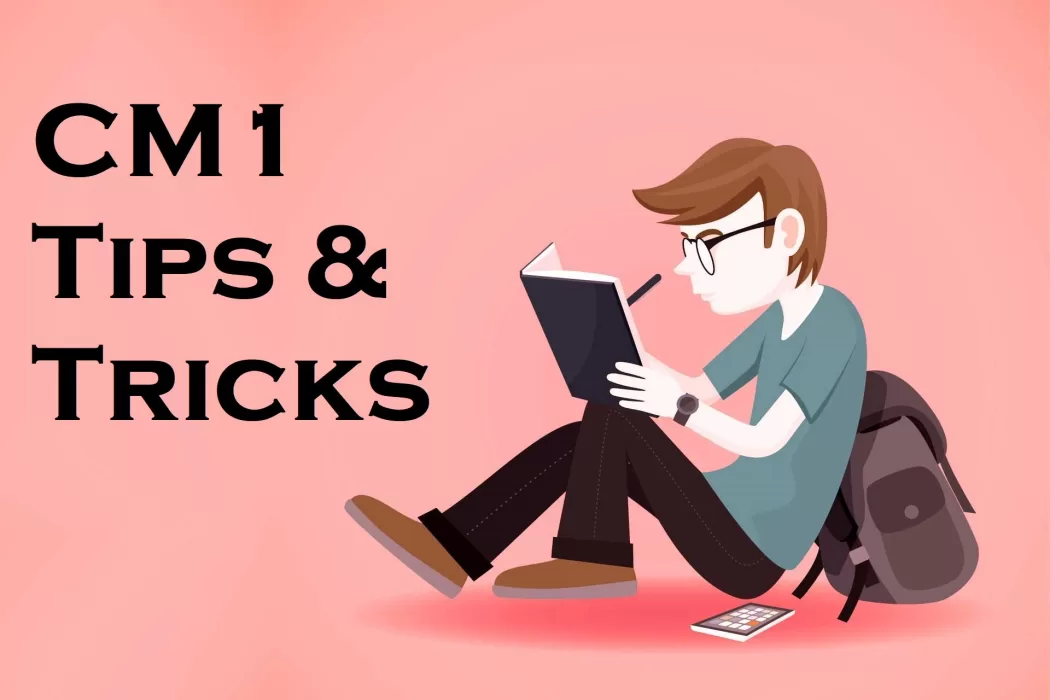CM1 is one of the most basic and important paper and is widely applicable in real life. It is a combination of CT1 & CT5 and now also includes excel practical exam. For more details about CM1 you can visit here – CM1 Core Mathematics 1: First Milestone of New Curriculum.
Many of you must be looking for some guidance, so these are some of the CM1 Tips & Tricks. These you should keep in mind while studying for this exam. So here are some CM1 Tips & Tricks for you :
CM1 PAPER A: Exam Tips & Tricks
- The concept of annuities, level, increasing, and their different types. questions based on the calculation of annuity are seen in past years.
- Chances of One question of loan schedules (CH- 11) can be there like find annual/monthly/quarterly/half-yearly installments, loan outstanding at a certain point, principal and interest component, revised installment after some changes in the original loan agreement.
- Question from project appraisal using NPV or IRR or investment appraisal using MWRR, TWRR or LIRR. A comment like “which is better among TWRR and MWRR and why?” could be there.
- You can find the questions around to check immunization or log-normal distribution, or index-linked security, seen in past papers.
- My advice would be to make sure you know all types of Assurance and Annuity Contracts. some questions like how to derive their PV, EPV, Variance are usual.
- Important CM1 Tips & Tricks in Long questions is to know all about calculating net/gross premiums and reserves with fixed/variable benefits. Study deeply these topics like Prospective and Retrospective methods of calculating Reserves and Recursive Relationship of reserves. Also, calculation using the principle of equivalence having fixed/variable benefits for with or without profit policies.
- A short question could be there from insurance contracts having benefits contingent upon the various transition events like about Healthy, Sick and Dead.
CM1 PAPER B : Exam Tips & Tricks
- You can use the Actuarial Table and calculator. Cannot use the internet in-between.
- You must continuously keep on saving your work.
- There will be an extra 15 minutes at the end of the examination to submit the sheets, complete your exam in 1.45 hrs.
- Make sure you have tested the download and uploading options before the examination (equipment checking).
- Break your calculations into different cells. Don’t try to put all the calculations in one cell as it will lead to more chances of mistakes.
- In the summary sheet (where we have to provide only answers) after each question do not copy-paste the answer to each part instead give reference to that cell.
- If you face any problem during the examination contact the education team at [email protected] or [email protected]
- One important concept which can be asked in small question or in theory way is from Unit Linked Contracts.
- A big question can be asked from profit testing (CH- 27& 28) to show how profit testing can be used to calculate premiums, set reserves, calculating fund values at end of the year, NPV of profit, profit margin, etc.
Some General Advice:
- During the exam, solve questions that you know first and do not get stuck up in one question, move to another if you are not able to solve one.
- Focus on theory as much as you are focusing on practical. Do not leave theory for the end, make your notes as you study. Theory and small questions (2-5 marks) may add up to 20 marks.
- Another advice is to not to write too long for questions that carry fewer marks or don’t write too less for questions that carry good marks. Please remember 1 mark = 1.8 minutes of exam time. Write longer questions first as they are more scoring. Small questions might be some times tricky and may waste your time.
- Learn to understand the concept as give a “comment” questions will be there. You must have conceptual clarity of the topic to offer such comments.
- Another piece of advice would be to learn formulae that will make your concepts clear, so try to understand and derive them. Do not rely on tables for basic formulae completely.
- Many students face the problem of lack of practice so solve Question Bank and X series along with past exam papers (minimum past 6 years paper). Don’t just go through it, solve. You can also find more tips and past year papers: https://www.actuaries.org.uk/studying/prepare-your-exams
Apart from these, your dedication and practice are what matters most. Work hard and all the best!

Other Actuarial Exams Helpful Links
| Actuarial Science Entrance for only IAI | ACET Exam – Pattern, Syllabus, Previous Year Question Paper |
| Core Mathematics in Actuarial Science | CM1 Core Mathematics 1 – Guide and Details CM1 TIPS & TRICKS CM2: History, Exemptions, Links & Syllabus |
| Core Statistics in Actuarial Science | CS1 Actuarial Statistics – Guide and Details |
| Core Business in Actuarial Science | CB1 (CT2) – Business Finance Tips & Tricks CB2 Business Economics – Guide & Details CB3 (CT9) Business Management : Guide & Details What is OPAT Exam by IFOA | Enrolment |Exam Structure and Preparation |
| Core Principles | CA2 / CP2 exam Paper 1 – Tips and Strategies |

